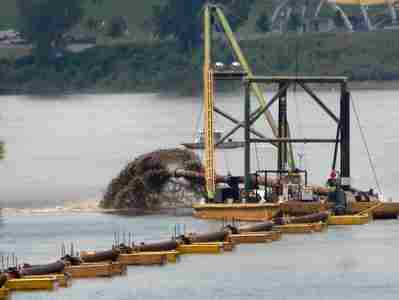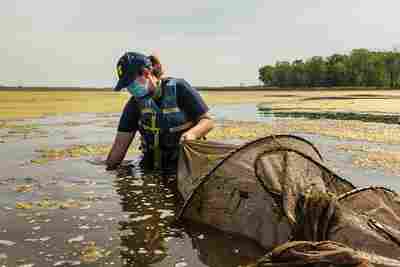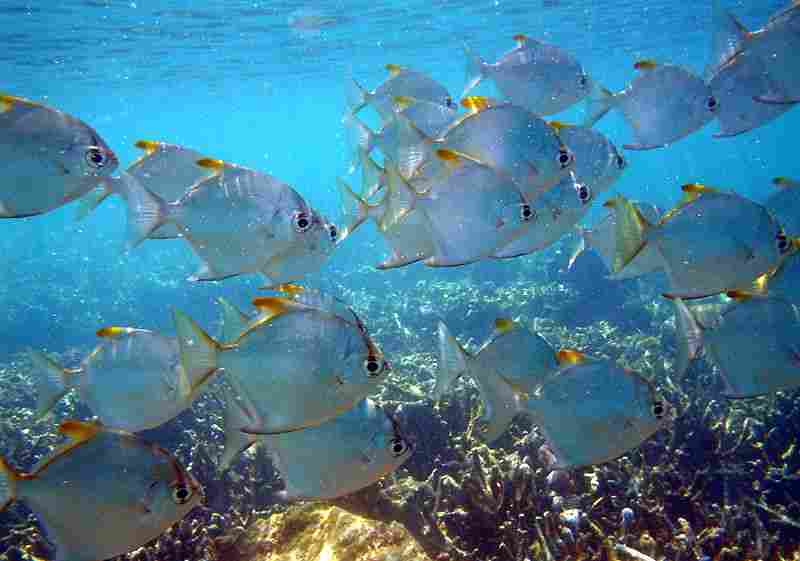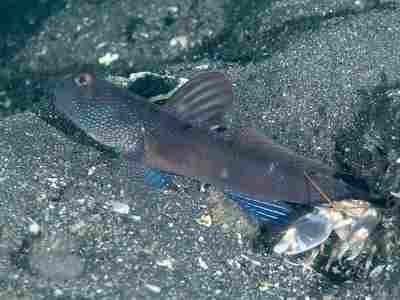What is the Largest Estuary In the World? Insights into Large Estuarine Systems
The largest estuary in the world is the Gulf of St. Lawrence River, in terms of its length and total area; which are; 1,197 kilometers (744 miles) and over 1 million square kilometers respectively.
Some studies argue that other estuaries like the Chesapeake Bay are qualified to be called the largest in the world provided other factors like flow volume and length of shore/coastline are considered.
However, for all contexts where area and length are core determinants of size, the St. Lawrence River remains the largest estuary on Earth.
Reasons Why the St. Lawrence River Gulf is the Largest Estuary in the World
1. Length or Lateral Extent
The length or lateral extent of an estuary is an important factor in determining its size and classification. In the case of the St. Lawrence River Gulf, it stretches for an impressive 1,197 kilometers (744 miles). This extensive length contributes significantly to its status as the largest estuary in the world.
The vast expanse of the St. Lawrence River Gulf allows for a diverse range of habitats and ecosystems to thrive. From the freshwater regions closer to the river’s source to the brackish and saltwater areas closer to the ocean, the estuary encompasses a wide range of environments. This diversity supports a rich array of plant and animal species, making it a vital ecological hotspot.
The length of the St. Lawrence River Gulf also plays a crucial role in its hydrodynamics. The flow of water within the estuary is influenced by various factors, including tides, river discharge, and wind patterns. The long stretch of the estuary allows for the gradual mixing of freshwater and saltwater, creating a unique blend of conditions that support a thriving ecosystem.
Furthermore, the length of the estuary provides ample space for sediment deposition and nutrient cycling. As water flows through the estuary, it carries sediments and nutrients from the river and surrounding land. The slow-moving nature of the estuary allows for the settling of sediments, which enriches the soil and provides essential nutrients for plant and animal life.
By inference, the length or lateral extent of the St. Lawrence River Gulf, spanning 1,197 kilometers (744 miles), is a significant factor in its classification as the largest estuary in the world. This extensive length contributes to the diverse habitats, hydrodynamics, and nutrient cycling within the estuary, making it a vital and thriving ecosystem.
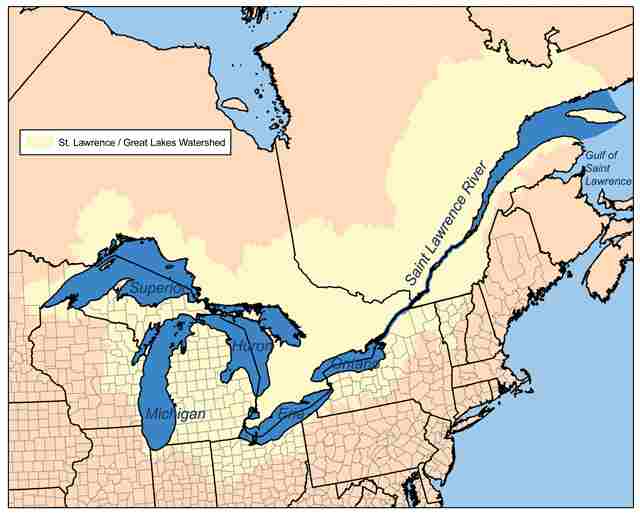
2. Total Surface Area
The total surface area of an estuary is another important factor in determining its size and classification. In the case of the St. Lawrence River Gulf, it spans between 1 million and 1.6 million square kilometers. This vast expanse of water contributes significantly to its status as the largest estuary in the world.
The extensive surface area of the St. Lawrence River Gulf provides ample space for a diverse range of ecosystems to thrive. From the open waters to the marshes and wetlands along the shoreline, the estuary encompasses a wide variety of habitats. This diversity supports a rich abundance of plant and animal species, making it a globally significant ecological hotspot.
The large surface area of the St. Lawrence River Gulf also plays a crucial role in its environmental processes. The estuary acts as a natural filter, trapping sediments and pollutants that flow from the river and surrounding land. This filtration process helps to improve water quality and protect the delicate balance of the ecosystem.
Furthermore, the extensive surface area of the estuary allows for the exchange of gases between the water and the atmosphere. This exchange is vital for the oxygenation of the estuarine environment, supporting the survival of aquatic organisms and promoting overall ecosystem health.
By encompassing between 1 million and 1.6 million square kilometers, the total surface area of the St. Lawrence River Gulf is a significant factor in its classification as the largest estuary in the world. This expansive area provides a diverse range of habitats, facilitates environmental processes, and supports a thriving ecosystem.
3. Average Depth
The average depth of the St. Lawrence River Gulf is a key factor in its classification as the largest estuary in the world. With an average depth of 145 feet, the estuary provides a significant water column that supports a diverse range of marine life. The shallow channels, measuring about 40 feet deep, and the deepest parts, reaching depths of around 250 feet, contribute to the overall depth profile of the estuary.
The average depth of 145 feet is particularly noteworthy when considering the vast area and length of the St. Lawrence River Gulf. This depth allows for the accommodation of large volumes of water, making it an ideal habitat for various species. The deeper sections of the estuary provide refuge for marine organisms that require specific environmental conditions, while the shallower areas offer suitable habitats for others.
The depth of the St. Lawrence River Gulf also plays a crucial role in the estuary’s hydrodynamics. The varying depths create a complex system of currents and tidal flows, influencing the circulation of water and the transport of nutrients and sediments. These hydrodynamic processes are essential for the overall health and functioning of the estuarine ecosystem.
Therefore, the average depth of the St. Lawrence River Gulf, with shallow channels of about 40 feet and deepest parts reaching depths of around 250 feet, is a significant factor in classifying it as the largest estuary in the world. This depth provides ample space for diverse marine life, contributes to the estuary’s hydrodynamics, and supports the overall ecological balance of the system.
4. Average Flow Volume
The average flow volume of the St. Lawrence River Gulf, which measures approximately 10,000 m3/s (350,000 cu ft/s), is another significant factor that contributes to its classification as the largest estuary in the world. This substantial flow volume indicates a large water drainage system, which plays a crucial role in shaping the estuarine ecosystem.
The high flow volume of the St. Lawrence River Gulf is a result of various factors, including the vast catchment area that extends across multiple regions. The estuary receives water from numerous tributaries, including the Great Lakes, which further enhances its flow volume. This continuous influx of freshwater creates a dynamic environment within the estuary, influencing the distribution of nutrients, sediments, and organisms.
The large flow volume of the St. Lawrence River Gulf has several implications for the estuarine system. Firstly, it promotes the mixing of freshwater and saltwater, creating a brackish environment that supports a diverse range of species. This mixing also contributes to the estuary’s unique physical and chemical characteristics, such as salinity gradients and turbidity levels.
Secondly, the high flow volume influences the estuary’s hydrodynamics, including the circulation patterns and tidal flows. These hydrodynamic processes are essential for nutrient cycling, sediment transport, and the overall functioning of the estuarine ecosystem. The flow volume helps to distribute nutrients and sediments throughout the estuary, providing essential resources for the diverse array of organisms that inhabit the system.
Therefore, the average flow volume of 10,000 m3/s (350,000 cu ft/s) in the St. Lawrence River Gulf is a significant factor in classifying it as the largest estuary in the world. This large flow volume indicates a substantial water drainage system, which supports the diverse marine life and influences the estuary’s hydrodynamics. The continuous influx of freshwater from various sources contributes to the unique characteristics and ecological importance of this remarkable estuarine system.
What is the Largest Estuary in the United States?
The Chesapeake Bay, spanning about 165,759 square kilometers, is the largest estuary in the United States. It stretches across parts of six states, including Delaware, Maryland, New York, Pennsylvania, Virginia, West Virginia, and the Washington D.C. region. This vast estuarine system is of great significance due to its size and ecological importance.
The Chesapeake Bay is renowned for its rich biodiversity and serves as a vital habitat for numerous species of plants, animals, and marine life. Its diverse ecosystem supports a wide range of habitats, including marshes, wetlands, and submerged aquatic vegetation.
These habitats provide essential breeding grounds, nurseries, and feeding areas for various species, contributing to the overall health and productivity of the bay.
In addition to its ecological significance, the Chesapeake Bay plays a crucial role in the economy and culture of the surrounding regions.
It supports commercial and recreational fisheries, providing a source of livelihood for many communities. The bay also attracts tourists and outdoor enthusiasts who engage in activities such as boating, fishing, and birdwatching.
While the Chesapeake Bay is the largest estuary in the United States, there are other notable estuaries in the country. For example, the San Francisco Bay in California is another significant estuarine system, covering an area of approximately 1,600 square kilometers (although this value is sometimes disputed). It is known for its iconic landmarks such as the Golden Gate Bridge and Alcatraz Island.
Another notable estuary is the Pamlico Sound in North Carolina, which is the second largest estuarine system in the United States. It spans an area of around 5,335 square kilometers and is characterized by its extensive salt marshes and shallow waters.
Drawing from the above, the Chesapeake Bay stands as the largest estuary in the United States, encompassing a vast area and supporting a diverse range of ecosystems. Its ecological, economic, and cultural importance cannot be overstated. While there are other significant estuaries in the country, the Chesapeake Bay remains a unique and invaluable natural resource.
FAQs
1. Which is the Largest Estuarine System?
The largest estuarine system in the world is the St. Lawrence River Gulf. This vast estuary is known for its impressive size and unique characteristics.
The St. Lawrence River Gulf stands out in terms of its length or lateral extent. Stretching over 1,190 kilometers, it is one of the longest estuaries globally, making it a significant feature in the world’s geography.
In addition to its length, the St. Lawrence River Gulf boasts a substantial total surface area. Covering approximately 1.6 million square kilometers, it provides a vast habitat for diverse marine life and supports various ecosystems.
Another factor that contributes to the St. Lawrence River Gulf’s distinction as the largest estuarine system is its average depth. With an average depth of around 145 feet, it offers ample space for marine organisms to thrive and flourish.
Furthermore, the average flow volume of the St. Lawrence River Gulf adds to its significance. The estuary experiences a substantial flow of freshwater from the Great Lakes, making it a crucial component of the hydrological cycle and a vital resource for surrounding communities.
Therefore, the St. Lawrence River Gulf’s impressive length, total surface area, average depth, and flow volume make it the largest estuarine system in the world. Its unique characteristics and ecological importance highlight the significance of estuaries in our global ecosystem.
2. What is the Third Largest Estuary?
The third largest estuary in the world is Chesapeake Bay. Spanning approximately 200 miles in length, Chesapeake Bay is not only the largest estuary in the United States but also holds the distinction of being the third largest estuary globally. With its vast size, it contains an impressive volume of water, estimated to be more than 18 trillion gallons.
Chesapeake Bay’s significance as an estuarine system is further emphasized by its unique characteristics. It serves as a transitional ecozone, where freshwater from rivers and streams mixes with saltwater from the ocean. This blending of different ecosystems creates a diverse habitat that supports a wide range of marine life and contributes to the overall ecological balance.
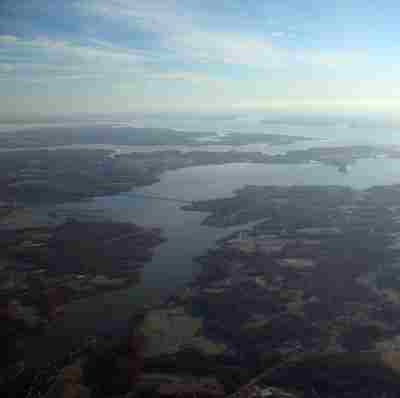
While Chesapeake Bay is commonly recognized as the third largest estuary, it is worth noting that there is some debate regarding its ranking. Some argue that it could potentially be the second largest estuary in the world. However, regardless of its exact position, Chesapeake Bay remains a remarkable natural feature and a vital component of the United States’ coastal environment.
Therefore, Chesapeake Bay stands as the third largest estuary globally, showcasing its immense size and ecological importance. Its role as a transitional zone between freshwater and saltwater ecosystems highlights the significance of estuaries in maintaining the balance of our natural world.
3. Is an Estuary a Sea or River?
An estuary is neither a sea nor a river, but a transitory ecozone between saltwater and freshwater ecosystems. It serves as a partially enclosed, coastal water body where freshwater from rivers and streams mixes with saltwater from the ocean. Estuaries, along with their surrounding lands, act as points of transition from land to sea.
The distinction between an estuary and a sea or river lies in its unique characteristics and ecological functions. Unlike a sea, which is a large body of saltwater, or a river, which is a flowing freshwater system, an estuary combines elements of both.
It is influenced by tides and currents from the ocean, while also receiving freshwater inputs from rivers and streams.
This blending of different ecosystems creates a dynamic and diverse habitat that supports a wide range of marine life.
Estuaries are known for their high productivity and biodiversity, as they provide a rich food source and nursery grounds for various species. They also play a crucial role in filtering pollutants and sediment, improving water quality, and protecting coastal areas from erosion.
Therefore, an estuary is a unique and important coastal feature that bridges the gap between saltwater and freshwater environments. It is neither a sea nor a river, but a transitional zone that supports a delicate balance of ecosystems.
4. What is an Example of a Famous Estuary?
The Orange River is an example of a famous estuary. As mentioned earlier, an estuary is a transitional zone where freshwater from rivers and streams mixes with saltwater from the ocean. The Orange River estuary is located in South Africa and is one of the largest estuaries in the country.
The Orange River is known for its unique characteristics and ecological significance. It stretches over 2,200 kilometers, making it one of the longest rivers in Africa. The estuary itself is a vital habitat for a diverse range of plant and animal species. It serves as a breeding ground and nursery for various fish species, including the endemic Orange River mudfish.
The estuary also plays a crucial role in supporting the local economy and communities. It provides opportunities for fishing, tourism, and recreational activities. The surrounding wetlands and marshes are important for water purification and flood control.
Furthermore, the Orange River estuary is a significant site for birdwatching, attracting numerous migratory bird species. Bird enthusiasts can spot a variety of waterbirds, including flamingos, pelicans, and herons.
5. Why are Estuaries Important?
Estuaries are incredibly important ecosystems due to their unique ecological roles and functions. They serve as a vital link between freshwater and marine environments, creating a transition zone that supports a wide range of plant and animal species.
One key reason why estuaries are important is their role in providing essential habitats for various species. The mix of freshwater and saltwater creates a diverse and dynamic environment that supports a rich biodiversity. Estuaries serve as nurseries and breeding grounds for many fish, shellfish, and crustaceans. They also provide feeding and resting areas for migratory birds and serve as a home for numerous plant species.
Estuaries also play a crucial role in maintaining water quality. They act as natural filters, trapping sediments and pollutants before they reach the ocean.
The vegetation in estuaries helps to stabilize shorelines and prevent erosion. Additionally, estuaries are important for nutrient cycling, as they receive nutrients from rivers and deliver them to the ocean, supporting the productivity of marine ecosystems.
Furthermore, estuaries provide numerous benefits to human communities. They support commercial and recreational fishing industries, providing a source of food and income.
Estuaries also attract tourists and nature enthusiasts, offering opportunities for boating, birdwatching, and other recreational activities. Additionally, estuaries help protect coastal areas from storm surges and flooding by acting as natural buffers.
Based on the above, estuaries are important ecosystems that are instrumental in supporting biodiversity, maintaining water quality, and providing various benefits to both wildlife and human communities.
6. What is an Estuary?
An estuary is a unique and dynamic ecosystem that forms where freshwater from rivers and streams meets and mixes with saltwater from the ocean. It is a transition zone between land and sea, which is characterized by fluctuating salinity levels and a diverse range of habitats.
Estuaries are often found along coastlines and can take various forms, including bays, lagoons, and river mouths. They are influenced by tides, which cause the water level to rise and fall, creating a constant exchange of nutrients and sediments. This tidal action also helps to oxygenate the water, making estuaries highly productive environments.
The mix of freshwater and saltwater in estuaries creates a unique set of conditions that support a wide variety of plant and animal species. Estuaries are home to numerous fish, shellfish, and crustaceans, many of which rely on these habitats for spawning and nursery grounds. They also provide feeding and resting areas for migratory birds, making them important stopover points along migration routes.
Estuaries play a role in determining the overall health of coastal ecosystems. They act as natural filters, trapping sediments and pollutants before they reach the ocean, thereby improving water quality. The vegetation found in estuaries helps to stabilize shorelines, preventing erosion and protecting coastal areas from storm surges and flooding.
Conclusion
* The St. Lawrence River Gulf is considered the largest estuary in the world due to its impressive length or lateral extent, spanning up to 1,190 kilometers. It also boasts a vast total surface area. Additionally, the estuary’s average depth and flow volume contribute to its distinction as the largest estuarine system.
* In the United States, the Chesapeake Bay holds the title for the largest estuary. With its extensive network of rivers and streams, it covers an area of approximately 1.6 million square kilometers. Its ecological significance and economic value make it a vital estuarine system in the country.
* Estuaries, whether large or small, play a crucial role in maintaining the health of coastal ecosystems. They serve as natural filters, capturing sediments and pollutants before they reach the ocean, thus improving water quality. Estuaries also provide essential habitats for a diverse range of plant and animal species, acting as spawning and nursery grounds for fish, shellfish, and crustaceans. Furthermore, they offer feeding and resting areas for migratory birds, making them vital stopover points along migration routes.
* Estuaries are dynamic and unique ecosystems that form where freshwater and saltwater meet. They are characterized by fluctuating salinity levels and a variety of habitats, such as bays, lagoons, and river mouths. Tidal action in estuaries facilitates the exchange of nutrients and sediments, contributing to their high productivity. These ecosystems also help stabilize shorelines, preventing erosion and protecting coastal areas from storm surges and flooding.
* Overall, estuaries are of great importance due to their ecological, economic, and cultural value. They support diverse ecosystems, provide essential services, and contribute to the overall health of coastal regions. Understanding and preserving these valuable estuarine systems is crucial for the well-being of both human and natural communities.
* The St. Lawrence River Gulf stands as the largest estuary in the world, while the Chesapeake Bay holds this distinction in the United States. Estuaries, regardless of their size, play a vital role in maintaining the health of coastal ecosystems and provide essential habitats for a wide range of species. Preserving and protecting these unique ecosystems is crucial for the well-being of our planet and future generations.
